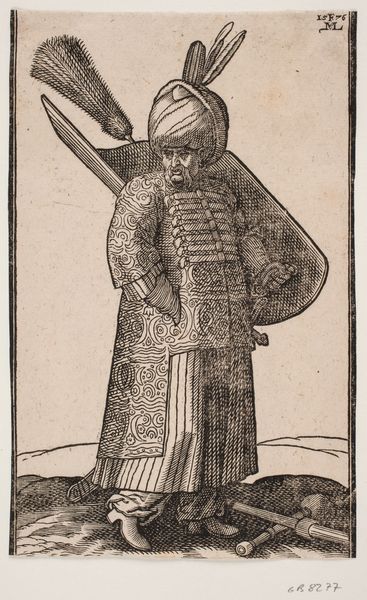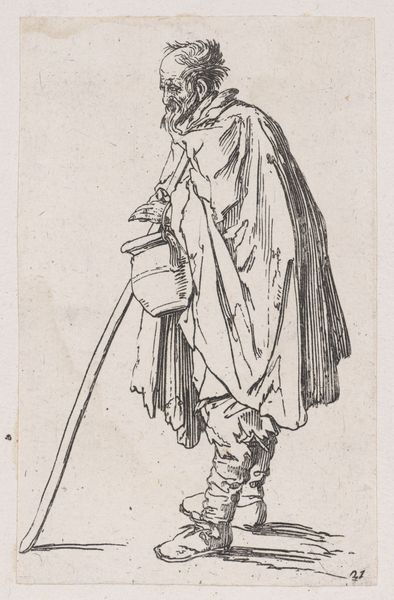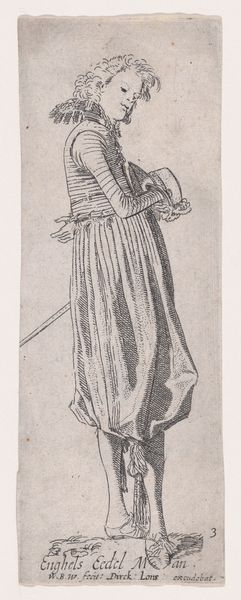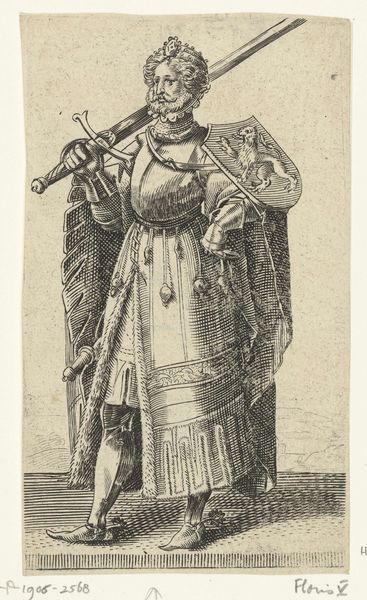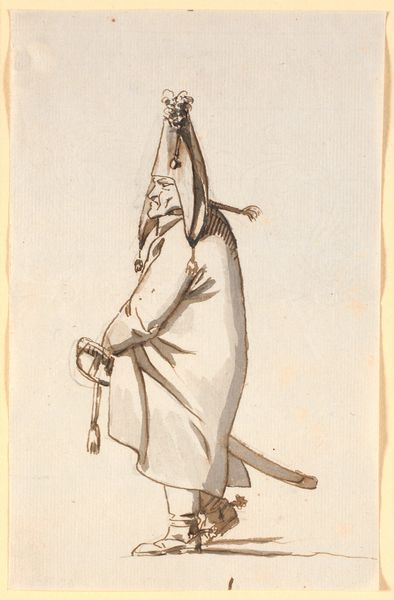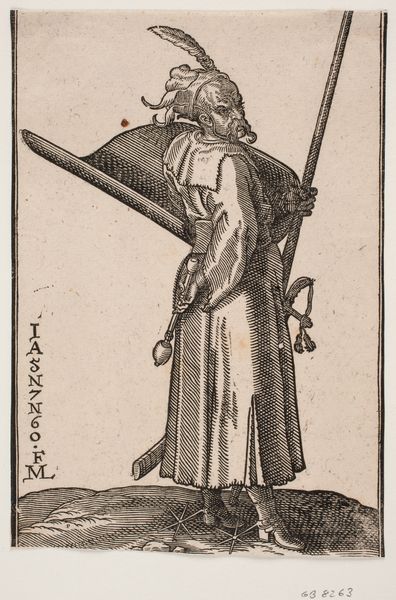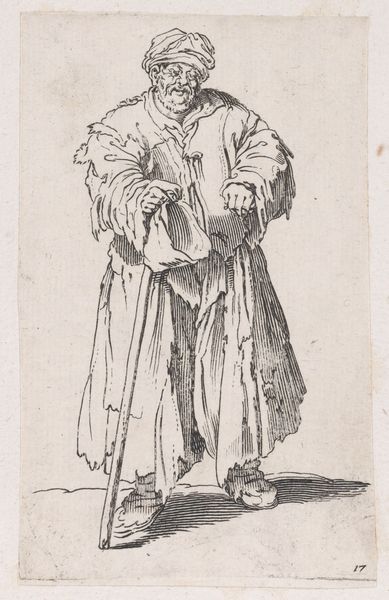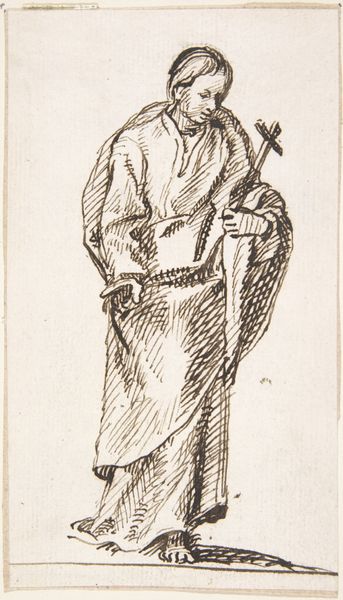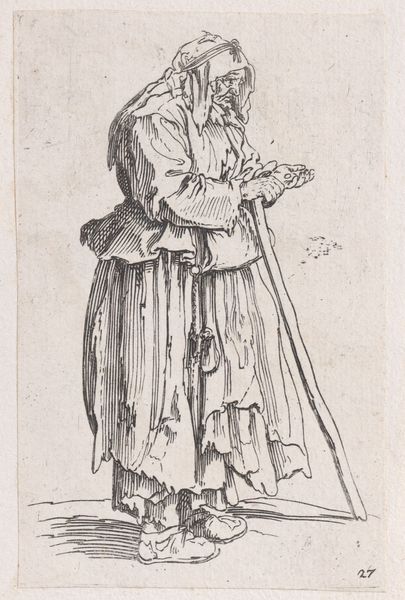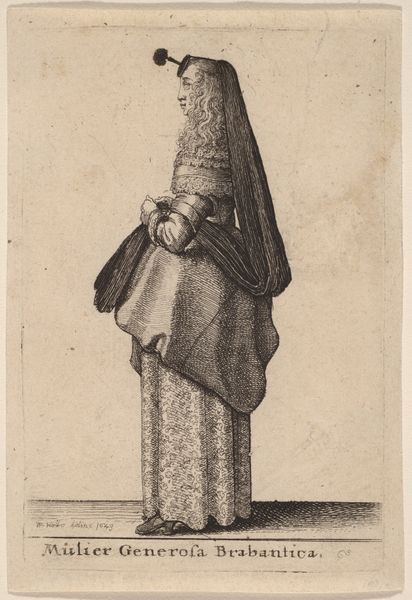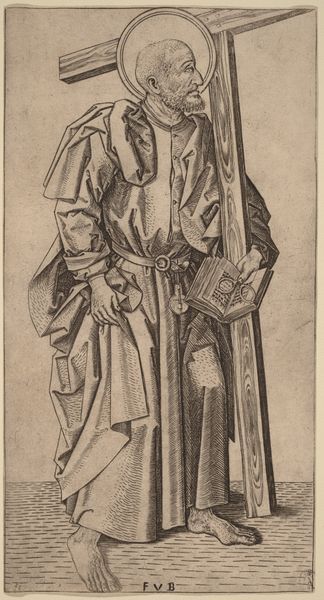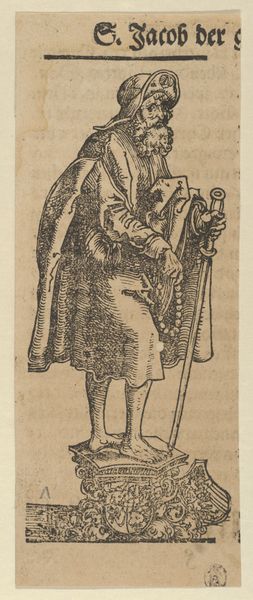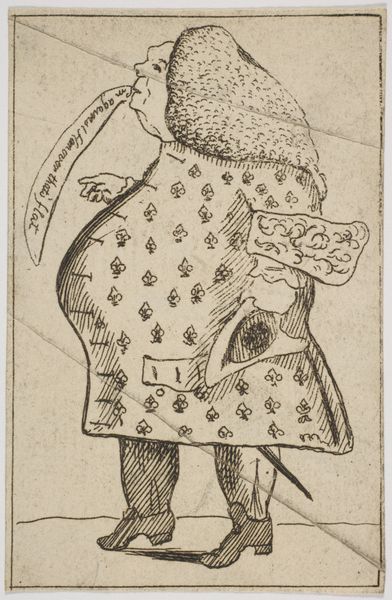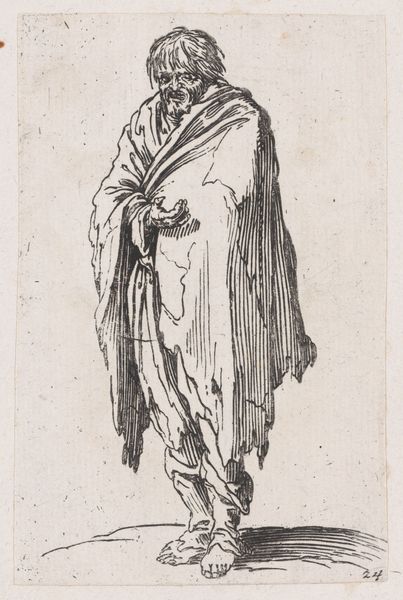
Stående soldat, vendt mod h.; på hovedet en spids hjelm med anselig fjerbusk; i h. hånd en lanse, hvis top er uden for øvre indramningslinje; på v. arm et skjold med indersiden vendt opad 1576
0:00
0:00
print, woodcut
#
portrait
# print
#
woodcut
#
history-painting
Dimensions: 212 mm (height) x 137 mm (width) (bladmaal)
This image of a standing soldier was made in 1576 by Melchior Lorck, using the technique of engraving. The stark contrast of the black lines on paper defines the soldier's form, from his plumed helmet to the tip of his lance. Engraving is a printmaking process where lines are incised into a metal plate, which then holds ink and transfers the image to paper. This painstaking method demands skill and control, evident in the fine, deliberate lines that create the textures and details of the soldier's attire and weaponry. The cross-hatching, in particular, is not just a means of rendering tone, but also a testament to the labor-intensive nature of the process. Consider the social context: printmaking at this time was closely tied to the rise of a merchant class, and the mass production of images for popular consumption. Lorck's choice of a soldier as his subject reflects the period's preoccupation with military power and social order. This small print embodies significant historical narratives.
Comments
No comments
Be the first to comment and join the conversation on the ultimate creative platform.
